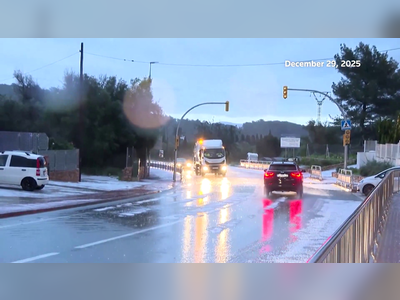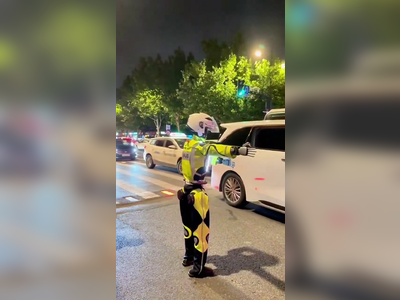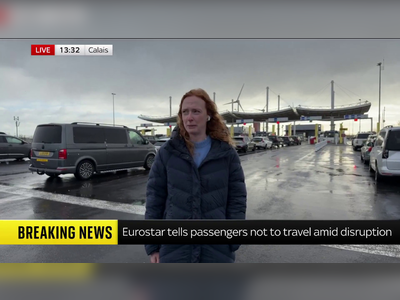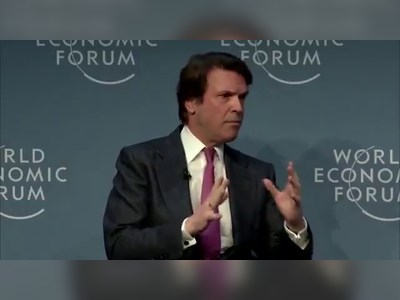How Hong Kong’s smart mobility ambitions will be boosted by 5G roll-out
Looking back in time, you can pinpoint when something significant in tech started – from the smartphone age, when Steve Jobs unveiled Apple’s first iPhone in the US, to the world’s biggest shopping day, when Jack Ma led Alibaba Group Holding’s launch of its Singles’ Day promotion in China.
Hong Kong’s bid to become a world-class smart city was kick-started with the public unveiling of its five-year blueprint on December 15, 2017. A recent interview with executives of the Hong Kong Applied Science and Technology Research Institute (ASTRI) put that government programme into perspective, as it relates to the potential of smart mobility and the role of 5G mobile technology.
“We’re enabling some Hong Kong-based 5G applications to enhance the autonomous vehicle experience,” said Eric Tsang, chief technologist of baseband solutions at ASTRI. “Our technologies are ready, but there’s a lot of trial and error [in our collaborations with industry players].”
The latest initiatives by ASTRI, whose mission is to enhance Hong Kong’s hi-tech competitiveness through applied research, come at a complex period of political and economic turmoil, amid continuing anti-government protests and ongoing efforts to get the coronavirus pandemic under control.
Compared with mainland China, which has been investing billions of dollars since last year to build the infrastructure that will foster the world’s largest 5G market, the commercial roll-out of 5G services by Hong Kong’s four mobile network operators only started early this second quarter.
Network trials for various 5G applications in the city – with a population of more than 7 million in a land area of 1,100 sq km – have also been smaller in scale.
Major Chinese metropolitan governments – including Beijing, Shanghai and Guangzhou – are pursuing ambitious programmes, by comparison, with the support of three giant telecommunications network operators, whose total mobile subscribers reached 1.6 billion as of April. China’s largest internet companies – led by Baidu, Tencent Holdings and Alibaba, parent company of the South China Morning Post – are also involved in 5G-related projects.
But like the world’s second largest economy, Hong Kong has sharpened its focus on adapting 5G’s advanced capabilities in so-called cellular vehicle-to-everything (C-V2X) communications. This smart mobility technology enables the exchange of information between vehicles, pedestrians and roadside communications infrastructure, with the primary goals of improving road safety and making traffic flow more efficiently.
Part of Hong Kong’s envisioned intelligent transport system, C-V2X would also allow a new range of connected vehicles and advanced levels of autonomous driving to be introduced in the city.
“We’re moving closer to making the commercialisation of smart mobility technology a reality, thanks to our continuous trials since 2017,” said Henry Wong, head of strategic wireless technology and core networks at HKT, the largest telecoms network operator in Hong Kong. In 2018, HKT and ASTRI strengthened their ties by establishing the Smart City Joint Laboratory to explore advanced applications that include smart mobility systems for electronic road pricing and connected vehicles.
HKT, which launched 5G mobile services on April 1, has worked on C-V2X at the Hong Kong Science Park with ASTRI, which has developed software for that platform. The project, conducted on the 5.9-gigahertz frequency band, included testing cars with built-in C-V2X systems, a dedicated mobile app and roadside units that relay messages and provide active road safety services.
HKT’s Wong was adamant about how C-V2X would help make travelling safer. “It could save more than 100 lives that we lose each year because of traffic accidents,” he said.
Widespread 5G service coverage is expected to drive the roll-out of various smart mobility programmes in the city, including C-V2X systems that will help support autonomous driving. The next-generation mobile technology can support 1 million connected devices per square kilometre; provide 1 millisecond latency (representing the nearly instant time a packet of data takes to get from one point to another); deliver greater efficiency in terms of power and use of radio spectrum; and offer peak data download rates of up to 20 gigabits per second, faster than what current 4G networks offer.
The low latency and high bandwidth enabled by 5G will make communications between vehicles and the infrastructure better and quicker, according to Lou Tiancheng, co-founder and chief technology officer at Pony.ai, a Toyota Motor-backed self-driving tech start-up with robotaxi operations in both the US and China.
“When interaction between the car and surrounding objects, the traffic control system and the data centre becomes faster, the safety [of autonomous driving] will be further improved,” Lou said.
ASTRI plans to escalate its C-V2X efforts in Hong Kong with a new trial later this year at a 14km stretch of road in Sha Tin district, located in the city’s New Territories. This project, which will involve regular vehicles, will use 4G for so-called backhaul requirements, but could upgrade to 5G when service coverage becomes available at the location, according to ASTRI. It also expects to start a new test site at the Hong Kong Science Park. There are no details yet on local partners.
The new programmes are expected to help ASTRI deliver a proposed “Hong Kong C-V2X Specification and Reference Design” for the Transport Department to consider further C-V2X deployment in other areas across the city. ASTRI also plans to draw up an evaluation report on 5G features for assisting automated driving safety.
ASTRI’s Tsang said the institute serves as “a source of technology to help some vendors in the industry enable their products” as well as help operators pursue advanced services, which would bolster the government’s smart city developments.
Its upcoming C-V2X trials in Hong Kong would follow tests that ASTRI jointly conducted with Huawei Technologies, the world’s largest telecoms equipment vendor, during the World Internet of Things Expo 2018 held in Wuxi, in southern Jiangsu province. Those tests were conducted on about 6km of open road with six open crossings in Wuxi, site of the world’s first city-level C-V2X application demonstration site that spans around 170 sq km.
The 17 C-V2X applications tested in Wuxi included forward collision warning, intersection collision warning, left turn auxiliary, vehicle blind area or lane change warning, road danger risk warning, speed limit warning, speed guidance based on signal lights, warning of congestion ahead, warning of pedestrian crossing in blind areas, and warning of on-ramp vehicles, according to ASTRI.
Those showed the capabilities of Huawei’s dual-mode C-V2X roadside device, supported by ASTRI’s C-V2X software and algorithms.
In Hong Kong, the Transport Department has been issuing permits for autonomous driving trials since 2017. These have covered eight different vehicle models. Designated test sites include the West Kowloon Cultural District, Hong Kong Science Park, and the Hong Kong University of Science and Technology, according to a government statement last November.
A three-minute test ride in Science Park on April 7 offered a glimpse into the future of transport. The two-seater car had a “safety driver” behind the wheel to take control in case of an emergency. The driver did not touch the wheel in the test area, which had a 10km per hour speed limit, even when making turns and stopping once when a lady in red crossed the road about several metres ahead of the car’s path.
This ongoing autonomous driving trial, jointly conducted by ASTRI and China Mobile Hong Kong, uses a Chinese-brand electric vehicle equipped with cameras on the front and back, GPS, high-precision mapping software, Lidar – the remote sensing technology that measures distances using laser light – and various other sensors that communicate with each in-car device via 5G.
As part of its smart city blueprint, the Hong Kong government plans to deploy 1,200 traffic detectors in the city by this year to provide real-time traffic information. A pilot intelligent traffic signal system, with sensors tracking pedestrians and vehicles at road junctions, is expected to be installed by 2021. These form part of the government’s goal to introduce autonomous driving supported by V2X technologies, without elaborating on the timeline.
The government last year started a programme to install about 400 multifunctional lamp posts across Hong Kong as part of its smart city project. These lamp posts are equipped with Wi-fi access, Bluetooth detectors, meteorological and air quality sensors, as well as thermal detectors and up to two types of cameras. Its wide deployment could support future C-V2X system roll-outs.
Several of the initial 50 posts installed, however, were ripped down last August by anti-government protesters over privacy concerns about possible facial recognition use, which the government has denied. An advisory committee, composed of information technology and privacy experts, called for the project to go ahead without cameras installed.
“Lamp posts without cameras would be a major challenge to the development of autonomous driving, which relies heavily on roadside cameras to detect, for instance, a senior citizen crossing the road and alert the driver,” HKT’s Wong said. “We are working with ASTRI to replace the cameras with other technologies, such as radars and thermal devices, to overcome the challenge.”
“To make a connected network of vehicles, we will need at least 5,000 to 10,000 roadside units on lamp posts at cross junctions,” he said. “While autonomous driving in Hong Kong may still be three or five years away, we must keep working on smart road infrastructure [to support the technology and related applications].”
Others, however, suggest that the government and industry players address other areas.
“It’s a matter of methodology,” said professor Xu Yan, associate dean of business and management at the Hong Kong University of Science and Technology. “We have to find the real pain points in city management and see if there is a way to solve it with technologies like 5G.” He suggested, for example, wider adoption of digital payment on taxis.
Apart from infrastructure, the government and industry players are also expected to focus on regulation.
“Before autonomous driving is introduced in Hong Kong, the city would need an updated regulatory environment that includes insurance and transport,” said Stephen Chau Kam-Kun, chief technology officer at SmarTone Telecommunications. The city’s third largest mobile network operator, which launched its 5G service in late May, is studying potential smart mobility projects, according to Chau.
Beset with high traffic volume on its narrow roads, Hong Kong is projected to gradually adopt partial vehicle automation as advanced 5G applications go mainstream.
“It takes time and effort from different stakeholders before we can move to full autonomous driving,” said a spokesman for 3 Hong Kong, the city’s No 2 mobile network operator. Nevertheless, he expects 5G-based smart mobility initiatives to bring “safer, more convenient and environmentally-friendly” applications, without providing details.


















